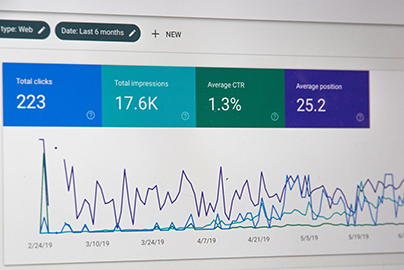
Share
Unlock Your Affiliate Marketing Potential: What Is EPC in Affiliate Marketing and How to Maximize Your Earnings
Are you ready to unlock your full potential in affiliate marketing and maximize your earnings? An essential aspect of affiliate marketing success is understanding Earnings Per Click (EPC) – a crucial metric that can make or break your campaigns. In this blog post, we’ll explore the world of “what is EPC in affiliate marketing”, how to calculate it, and the best strategies to boost your earnings in affiliate marketing.
Key Takeaways
- Understanding EPC is key to success in affiliate marketing, as it helps you measure performance & optimize revenue.
- Boost your EPC by targeting high converting products/niches, optimizing landing pages & leveraging email/content marketing.
- Monitor and analyze your performance with analytics tools and A/B testing for optimization, avoid common pitfalls!
Understanding EPC: The Key to Affiliate Marketing Success
EPC, or earnings per click, is a metric that helps affiliate marketers measure the success of their campaigns and optimize revenue generation. In the world of affiliate marketing, EPC is the average amount of money you make per click from an affiliate link, contributing to your overall affiliate marketing revenue. So, what makes a good EPC? If your earnings per click are higher than your cost per click, you’re on the right track, as it leads to more affiliate sales.
Understanding your EPC allows you to:
- Gauge the performance of your affiliate landing pages
- Predict the profit each click might yield
- Increase affiliate sales
- Benefit affiliate partners who can drive significant amounts of traffic to products.
Breaking Down EPC Calculation
EPC calculation involves taking the total commissions earned and dividing it by the number of clicks sent through affiliate tracking links on affiliate marketing sites. This metric provides insight into the average earnings per click, helping affiliates gauge the efficiency of their campaigns.
EPC in an affiliate program can be maximized by targeting products and niches with high conversion rates, enhancing landing pages for conversions, employing email and content marketing, and utilizing analytics tools coupled with A/B testing for optimization. However, common EPC pitfalls include blindly choosing a product based on the highest EPC, not taking into account the cost-per-click, and not monitoring and analyzing EPC performance.
To avoid these, consider the cost-per-click, monitor EPC performance, and understand the differences between EPC and CPC.
EPC in Different Affiliate Networks
Different affiliate networks, such as:
- Amazon Associates
- ClickBank
- Impact
- CJ Affiliate
- Rakuten
- ShareASale
These networks are popular choices for an affiliate marketer looking to find an affiliate partner and explore many affiliate marketing sites among various affiliate websites.
Use EPC to measure affiliate performance and earnings potential. Affiliate marketers can benefit greatly from displaying their EPC on affiliate marketing networks. This allows them to easily compare their earning potential with that of other merchants.
Network EPC is a combination of EPCs for all the affiliates of an affiliate network. Affiliate networks, such as ShareASale, CJ, Impact and Awin, offer the opportunity to compare commission rates. This feature is extremely advantageous for those in the business of affiliate marketing. Choosing the merchant with the highest payout can provide an immediate advantage in enhancing your EPC, particularly when collaborating with multiple affiliate marketing sites.
How to Boost Your EPC: Strategies and Best Practices
Boosting your EPC (Earnings Per Click) necessitates the adoption of effective strategies and best practices such as:
- Focusing on products and niches with high conversion rates
- Enhancing landing pages for conversions
- Employing email and content marketing to attract traffic and augment earnings
Target High-Converting Products and Niches
Focusing on high-converting products and niches can lead to higher EPC and increased affiliate marketing earnings, ultimately boosting your affiliate revenue. Research and select products with competitive commission rates and high conversion potential to maximize your earnings.
To fully capitalize on your best-performing offers, follow these steps:
- Evaluate all available offers in your niche and continue optimizing.
- Focus on optimizing pages with content that encourages people to purchase.
- Ensure this content is commercially orientated and has product-focused characteristics.
- Promote products that your audience can relate to and that have a higher chance of generating clicks and sales.
By following these steps, you can maximize the potential of your best-performing offers.
Optimize Landing Pages for Conversions
Optimizing landing pages for conversions can significantly improve EPC by increasing the likelihood of visitors making a purchase. Implement best practices for design, user experience, and persuasive copy to boost your conversion rates and EPC.
Some best practices for optimizing landing pages for conversions include:
- Ensuring consistent messaging with your ads
- Keeping the action above the fold
- Utilizing directional cues
- Demonstrating your product or service in action
- Keeping layouts simple with plenty of white space
By providing an optimized user experience, you can build trust and credibility with visitors, reduce bounce rates, and ultimately increase your EPC.
Leverage Email Marketing and Content Marketing
Utilizing email marketing and content marketing strategies can drive targeted traffic to affiliate offers, resulting in higher EPC. Create valuable content and engage subscribers with relevant affiliate offers to increase your earnings through a well-planned affiliate marketing campaign.
Embedding affiliate product links in emails can enhance EPC, but maintaining the ratio of marketing emails with affiliate link placement to 30% or less is necessary. Tracking open and click-through rates in email marketing can help you make smarter decisions about your campaigns.
For affiliate links, it’s best to create blog or vlog posts that are reliable, high-quality, and follow SEO best practices to rank on search engines like Google and draw more visitors to your website.
Monitoring and Analyzing Your EPC Performance
Observing and scrutinizing EPC performance is necessary to pinpoint areas for improvement and refine campaigns. Use analytics tools and A/B testing to refine your strategies and maximize earnings.
Using Analytics Tools
Employ analytics tools, such as Google Analytics or specialized affiliate marketing tools, to track EPC performance and gain insights into campaign efficiency and areas for improvement. Google Analytics can help by tracking user behavior and the performance of different versions or ads, as well as collecting and measuring essential metrics like clicks and conversions.
Setting up Google Analytics for EPC tracking is simple: manually add the Google Analytics tracking code to your website’s code or use Google Tag Manager to link your website to Google Analytics. Once set up, you can track events related to EPC, such as clicks on affiliate links or conversions, and analyze affiliate performance based on the EPC data collected.
A/B Testing for Optimization
A/B testing is vital for enhancing EPC performance. Test different campaign elements, such as ad copy, landing page design, and offer placement, to identify the most effective strategies for increasing earnings.
To conduct A/B tests, follow these steps:
- Identify the elements you want to test.
- Create multiple versions of your ad copy or landing page.
- Run the different versions to a similar audience.
- Monitor the performance of each version, looking at metrics like CTR, conversion rate, and EPC.
- Analyze the results to determine which version performs better in terms of EPC.
- Use the winning version as your new ad copy or landing page.
- Continue to test other elements for further optimization.
Common EPC Pitfalls and How to Avoid Them
Common EPC pitfalls include relying solely on EPC as a standalone metric, neglecting external factors, and not considering geolocation. Avoid these pitfalls by adopting a holistic approach to affiliate marketing and considering all relevant factors.
Adopting a broad approach and considering all pertinent factors, such as conversion rate, customer lifetime value, and return on investment, along with EPC, paves the way to success. Factor in external elements like geolocation, seasonality, and device type when figuring out EPC, as these aspects can significantly affect your campaign performance and EPC values.
Summary
In conclusion, understanding and optimizing EPC is vital for maximizing your affiliate marketing earnings. By targeting high-converting products and niches, optimizing landing pages, leveraging email and content marketing, monitoring and analyzing EPC performance, and avoiding common pitfalls, you can unlock your full affiliate marketing potential and pave the way to greater success.
Frequently Asked Questions
What does EPC mean in affiliate marketing?
EPC in affiliate marketing stands for Earnings per Click – the average amount of money earned when someone clicks on one of your affiliate links.
What is an EPC on ClickBank?
EPC on ClickBank stands for “Earnings Per Click”, which is calculated by dividing total revenue generated from affiliate links by the number of clicks received. In other words, EPC measures how much you earn each time someone clicks an affiliate link.
What does EPC stand for in advertising?
EPC stands for earnings per click – a measure of how efficiently your traffic is earning from advertisers. With a higher EPC, you can earn more revenue for a given volume of clicks. Sovrn Holdings is an online advertising technology firm which focuses on EPC and has offices in various cities worldwide.
What does 3 month EPC mean?
EPC stands for Earnings Per Click and is a measure of the average earnings from a merchant’s program calculated over a 3-month period. It’s determined by dividing commission earned by the total number of clicks multiplied by 100.
What are some common EPC pitfalls and how can they be avoided?
EPC pitfalls such as relying on EPC alone, disregarding external factors, and ignoring geolocation can be avoided by taking a comprehensive approach to affiliate marketing while considering all the relevant details.
About Advertise Purple
Advertise Purple is the #1 affiliate management agency in the USA. We help clients across the country to super-charge their affiliate revenue and get the most out of the channel. In fact, our clients see an average of 131% growth in affiliate sales within our first six months of campaign management. This is done for any niche, whether you are in it for direct e-commerce sales or lead generation.
Through our extensive network of high-quality affiliates, we’ve driven over $22 million in revenue for clients. With over nine years of successful affiliate management experience and a team of dedicated experts, we’re revered by networks and publishers as the leading affiliate management company.
If you want to step up your performance marketing or need help developing your affiliate network, our team can help. Simply send us a message using the form below, call us on 866.833.0574 or email
in**@ad*************.com
. We’d love to hear from you!











